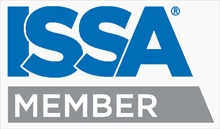Floor Care Focus: Floor Care Trends
In recent years, the traditional floor care strip-finish cycle is being challenged in a number of ways. Users want a way to eliminate the stripping process and make floor care simpler, and manufacturers & distributors are tasked with providing these solutions. While the future of floor care is uncertain, it is important for manufacturers, distributors, and end users of commercial floor care products to understand and prepare for current and upcoming floor care trends.
1. Changes in flooring materials
Traditional vinyl composition tile (VCT) is making way for different types of flooring that do not require or even prohibit application of a sacrificial floor finish. Some tiles manufactured today are coated during manufacture and prohibit application of a floor finish.
Polished concrete and terrazzo are becoming more and more popular and are easily maintained with diamond-impregnated floor pads.
Wood and rubber are also becoming more popular in certain facilities.
Ceramic and porcelain tiles are now the standard for kitchens and bathrooms, and are also used in hallways, elevators, and lobbies. These clay products were previously colored by applying a glaze, but this has been replaced with ink-jet printing technology, over which a urethane or similar coating is applied. These coatings will change the way that ceramic and porcelain tiles wear and become scratched.
It is important that as flooring materials change, our maintenance processes change with them to properly care for these surfaces.
2. Less floor finish
Floor finish use is decreasing in favor of diamond polishing, stain guards, and nano-coatings. Users want to move away from the more labor-intensive processes of finishing, burnishing, and stripping. Products and processes are being introduced that will reduce the use of floor finish and make maintenance simpler.
3. Sustainable floor care
Green floor care is becoming more popular, as green certified products are becoming more efficient and cost-effective in comparison to their traditional counterparts. Green floor strippers are becoming as effective, if not more effective, than traditional strippers, and green floor finishes are becoming more durable and cost-effective. Many areas are beginning to require green products, such as educational, health care, and government facilities.
4. New equipment
Floor care equipment is evolving and becoming easier to operate and more efficient. Equipment now uses less water than previously needed, and more scrubbers use square or rectangular pads that make it much easier to get into corners and along edges. Riding scrubbers are becoming more popular, and this could lead to the emergence of robotics, which could provide further ease of use and cost savings in large facilities.
5. Validation of floor care results
Facility managers no longer want to rely on visual checks to ensure their floors are installed and maintained properly. Scientific testing methods are becoming more popular in certain facilities such as school and health care facilities. Floor care testing processes include coefficient of friction, gloss, and general cleanliness using ATP meters. These testing procedures will heighten expectations regarding slip and fall prevention and contamination of surfaces. In the future these testing methods will become more common.
Technologies that seem new and unusual will become more and more common in the future, and those materials and methods that have been the staple of floor care will become obsolete. It is important for manufacturers and distributors of floor care supplies to become familiar with these new floor care trends, and to continue to be able to provide solutions in the ever-changing landscape of floor care.
For more information on floor care products and solutions, visit Multi-Clean’s Floor Care webpage.


